Speaker
Description
In the paper, a method is presented for moment tensor inversion of only direct waveforms registered at only limited number of seismic stations. The method is based on an inversion approach described in (Malytskyy 2010, 2016) where a version of matrix method has been developed for calculation of direct waves in horizontally layered half-space from the point source represented by its moment tensor. The inversion scheme consists of two steps. First (forward modeling), propagation of seismic waves in vertically inhomogeneous media is considered and a version of matrix method for calculation of synthetic seismograms on the upper surface of the horizontally layered isotropic medium is developed. The point source is located inside a layer and is represented by seismic moment tensor. The displacements on the upper surface are presented in matrix form in frequency and wave number domain, separately for far-field and near-field (Malytskyy 2016). Subsequently, only the far-field displacements are considered and the wave-field from only direct P- and S-waves is isolated with application of eigenvector analysis reducing the problem to system of linear equations (Malytskyy 2016). Subsequently (inverse modeling), spectra of the moment rate tensor components are calculated using a solution of generalized inversion and transformed to time domain by applying the inverse Fourier transform. The 1D crustal model used in all the inversions of waveforms is listed in Table 1. The duration of direct waves at the stations is estimated visually from the records, and accounting for the delays of reflection-conversion phases at the station corresponding to the model (Table 1) at a respective epicentral distance and source depth. As a rule, the duration of direct P-waves approximately varies between 0.3 s and 1.2 s. The highest frequency, on the other hand, is controlled by assumption of the point source and corresponds to a wavelength larger than linear dimensions of the fault, often less than 1 km in small earthquakes.
Table 1. The 1D crustal model used in the inversion of waveforms (Gonzalez et.al 2017).
Thickness, km Velocity Vp, km/s Velocity Vs, km/s ρ, kg/m3
3 3.5 1.99 2318
12 6.0 3.41 2717
15 7.0 3.98 2968
190 8.0 4.55 3291
Using the method presented in the current paper focal mechanisms of four small earthquakes in the Central Lesser Antilles are retrieved. The mechanisms independently determined for the same earthquake from its waveforms at different single stations turned out almost identical. The mechanisms are also compared with focal mechanisms estimated by full waveform inversion (Gonzalez et.al 2017). A conclusion is drawn out that the method will be useful when focal mechanisms can’t be obtained by other methods, the problem typical for regions with low seismicity and insufficient number of seismic stations.
.
Fig. 1. Map of the stations (triangles) used for determining the moment tensor solutions
As result, we first propose to compare the mechanisms independently determined for the same earthquake from its waveforms at different single stations. For the earthquake of 2014-05-14 they turn out almost indistinguishable between the stations SAM, SLBI, ILAM and SAM, SLBI, ILAM, MPOM (Fig.1) and only slightly differ from the mechanism estimated by full waveform inversion (event 10, Gonzalez et.al 2017), the same as for the earthquake of 2013-10-24 between the station ABD and stations ABD, DHS, DSD (event 5 Gonzalez et.al 2017), which at least means that despite all the uncertainties the unique solution exists and is reproducible. Finally, the focal mechanism solutions for the two earthquakes: 2014-08-09 and 2013-10-18 determined here by inversion of direct waveforms are compared to those estimated by full waveform inversion (events 21 and 3, Gonzalez et.al 2017). Larger differences however are present between the nodal planes for these earthquakes. There again a number of reasons may be why the solutions turn out different, the solutions estimated for small earthquakes by full waveform inversion also prone to a set of uncertainties. The subject deserves wider and deeper discussion, beyond however the frames of the present paper.
References:
[1] Gonzalez, O., Clouard, V., Zahradnik, J. Moment tensor solution along the central Lesser Antilles using regional broadband stations. Tectonophysics. 2017, 717, 214-225.
[2] Mai, M., Schorlemmer, D., Page, M. et al. The Earthquake-Source Inversion Validation (SIV) Project. Seismological Research Letters, 2016, vol.87, No.3, 690-708.
[3] Malytskyy, D. Analytic-numerical approaches to the calculation of seismic moment tensor as a function of time. Geoinformatika, 2010, 1, 79-85. (In Ukrainian)
[4] Malytskyy, D. Mathematical modeling in the problems of seismology, Naukova Dumka, Kyiv, 2016, 277 p. (in Ukrainian)

